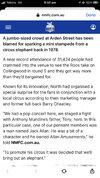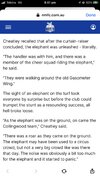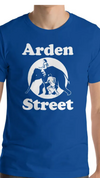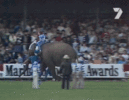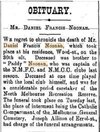Kanga Glory
Premium Platinum
And there was a young girl on it backWhat a superstar Bob was in that era. He established Budget Rent-a-Car and was the son of Reg Ansett, Ansett Airlines. Amazing man. His recall of the elephant isn't quite right. My recall (stand to be corrected) is that it was to promote a circus that was in the area - maybe Ashtons or Bullens. It didn't come from the zoo. It was a pies game at Arden St and the elephant was walking around the outer boundary when the pies came onto the ground. The cheers of the pies folk spooked the elephant and that's why it started to charge. Somehow it just stopped. Could have been a disaster.




